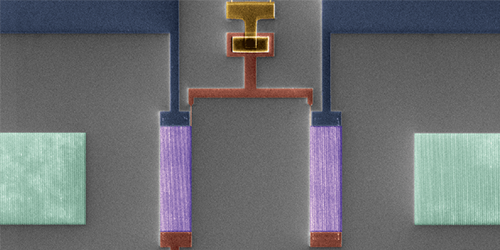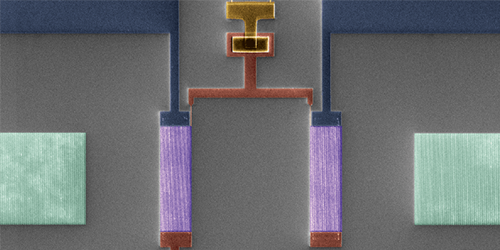Counting Phonons One by One
When it comes to quantum technologies, phonons—quanta of sound—may not be obvious competition for photons. But they have some advantages—such as a long lifetime and a short wavelength (compact size) at the megahertz frequencies where many quantum circuits operate. To fully exploit the properties of phonons, researchers need ways to access, monitor, and entangle them one by one. Lucas Sletten and colleagues at JILA in Colorado and the University of Colorado in Boulder have taken a step toward that goal, demonstrating a method for distinguishing individual phonons.
The team’s device links an acoustic cavity—a structure that houses phonons—to a superconducting qubit. The coupling occurs via a transducer, which creates an electrical signal for each phonon in the device. This signal then interacts with the qubit, temporarily shifting its energy. In a previous device, the Colorado group was able to tally seven phonons at a time (see 29 October 2018 Viewpoint) but not smaller increments. In the new device, the team redid the link between the cavity and qubit—using a transducer that converts phonon-induced strain in the cavity into an electrical signal. The change allowed them to strengthen the cavity-qubit coupling and increase detection sensitivity. By optimizing the transducer design and the operation parameters of the qubit, the team was able to resolve tiny shifts in the qubit’s energy, which they show correspond to those expected for individual phonons.
Now that they can count single phonons, Sletten says that the team plans to try to entangle different phonons in the cavity through their shared interaction with the qubit. This step would allow them to fully explore the potential of these sound-based quanta for computing applications.
This research is published in Physical Review X.
–Katherine Wright
Katherine Wright is a Senior Editor for Physics.





